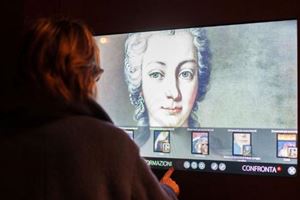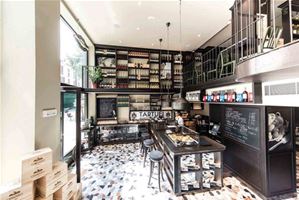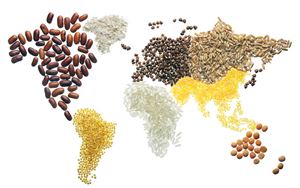Born in 1922, Dr. Franco Biondi-Santi hails from generations of prominent Tuscan wine makers. His grandfather, Ferruccio Biondi-Santi, was recognized in 1932 for giving birth to what is now celebrated worldwide as Brunello di Montalcino. Referred to as ‘a gentleman of the old school’, Franco Biondi-Santi has often been criticized for being too much of a traditionalist. He continues to make wine as his grandfather did and remains faithful to Brunello’s original recipe: pure Sangiovese, no additives or additions, slow refinement, no chemicals or weed killers and no barrique. Voted one of the best in world, his Brunello was described by wine expert Camillo Langone as a goblet of ‘nostalgia’, both ‘stoic and philosophical’. The Florentine’s Brenda Dionisi had a chance to speak to him about his Brunello and his family’s legacy.
Tell me about Brunello, more specifically your Brunello Biondi- Santi. What kind of wine is it?
Its principle characteristic is longevity. It is an extremely long-lasting wine and therefore the process must start with the perfect grapes, which are obtained from a rational cultivation of the vines. My labourers are quite specialized and select the most suitable grapes needed to make wines that can withstand time. The Brunello made at Il Greppo, the Brunello made by Biondi-Santi is, in my opinion, one of the most long-lasting wines in the world.
On September 28, 1994 we organized a vertical tasting with 15 Biondi Santi Riservas. Brunello was beginning to change form, so I decided to organize this special tasting, from the 1888 vintage to the 1988 to celebrate 100 years of Brunello Biondi-Santi. Among the 16 wine journalists present, Nicolas Belfrage from Decanter gave 10 out of 10 to our 1891 reserve-a vintage that was 103 years old at the time! In 1994 it was deemed perfect; we achieved perfection with the 10 points given.
It must be a unique sensation to know that you have made a ‘perfect’ wine.
Well, it is quite simple really, except for the journalistic chatter. Wine journalists are used to tasting wine-they simply uncork it and drink it. When they vote a wine, it is only after they have tasted hundreds of others. It is impossible for them to uncork a wine 8, 10 or 20 hours before a tasting-something which is fundamental for my wines due to their longevity. My wine needs time to breathe in order to understand how the scents, colours and structure evolve with time.
For me, it was easy to continue making wine because the road was already laid out for me by the great enological and agricultural experience of my father and my grandfather. It is almost like the act of wine making is in my family’s DNA, which is based on the experience of generations of agriculturists who were illuminated, I would say; they were agriculturists who had great knowledge of grape growing and wine making. This experience was then validated by the presence of extraordinary reserves. We have never found a reserve that was not sound. Naturally, these are very expensive bottles to buy, also because we produce only a few thousand a year. This is why I decided in 1990 to start filling up the bottles of older vintages for my clients as well.
Tell me about the filling-up process, the ricolmatura.
The filling up depends on the physicality of the cork. After 10, 20 or 30 years in the neck of a bottle, corks loose their elasticity and don’t fit tightly anymore. The level of the wine starts to fall. Less wine means greater contact with air and an acceleration of the maturation process. The solution I prefer is to drink the wine. But my clients can also bring their bottles here to me to fill them up. I give a certificate to each bottle filled up. Our certificates allow for three ricolmature approximately every 30 years for each bottle. These wines can live longer than their owners! Ninety years is a long time; this demonstrates the longevity of our Brunello. This year will be our 18th year filling up bottles for our clients and I have never been contested thus far.
What is the difference between a traditional Brunello and a modern Brunello?
Well firstly, there is a difference between the Brunello that grows 500 metres above sea level, like mine, and that which grows on lower-lying land facing southwest. In these areas the grapes mature 10 to 15 days earlier than here because of the warmer temperatures. This makes for a different, fuller-bodied Brunello. Another difference is the type of barrels used. Some wine growers in Montalcino use French barrique to age their Brunello, however I use barrels made of Slavonian oak. We still have and use five barrels that my grandfather bought in the late 1800s to ensure continuity from the tradition set forth by my ancestors. Barriques are smaller so they affect the outcome of the wine more by accelerating the maturation process and influencing the wine’s bouquet and taste. We have never used barriques for Brunello because Brunello needs time to mature; this process cannot be hastened in order to meet market demands. As well, Brunello doesn’t need external influences to give it structure or taste; it is a well balanced wine on its own.
Your 1955 Brunello Riserva was voted by Wine Spectator as one of 12 of the best wines of the twentieth century. How did you feel after learning that you made such a prestigious list?
I felt the same as before [laughs]. Funny enough, the author of the article, James Suckling, does not agree about the specificity of my Brunello because it isn’t similar to the type of wine that today’s wine drinkers prefer. Modern tastes are more inclined to like Californian and French wines. I had invited Suckling to a tasting here at Il Greppo, and when he tasted the 1955 reserve, he was overwhelmed. So he included the 1955 Riserva in the list even though he was contrary to it. It demonstrates how serious a writer he is-this was extremely gratifying for me.
Accusations of wine fraud relating to Brunellogate spurred Dr. Franco Biondi-Santi to post the following press statement, defending the integrity of his Brunello in light of the recent scandal: ‘Dr. Franco Biondi-Santi, owner of the Il Greppo estate in Montalcino, would like to clarify that the Biondi-Santi estate has been inspected by officials of the Ispettorato Controllo Qualita’. During this inspection, quality control officials did not find any irregularities on the premises. Thus the Il Greppo estate operates in the same manner as before and at regular production capacity. None of its bottles or vines have been sequestered by authorities’. (Please note that the translation of the official press release by the Biondi-Santi estate was carried out by The Florentine).







